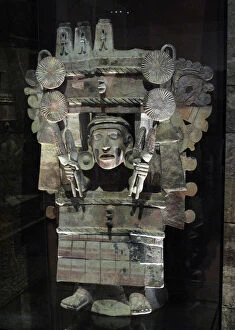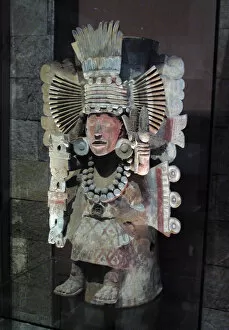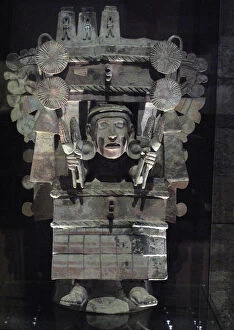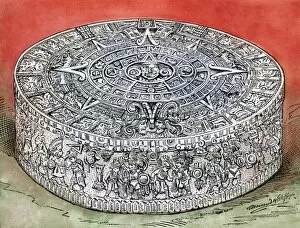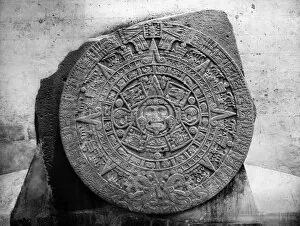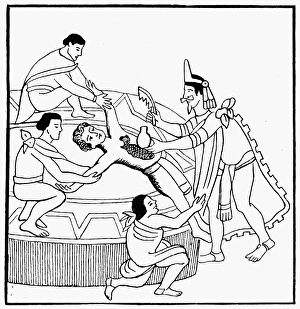Aztec Mythology Collection
"Exploring the Mystical World of Aztec Mythology: From Incense Burners to Sacrifices" Step into the enchanting realm of Aztec mythology
All Professionally Made to Order for Quick Shipping
"Exploring the Mystical World of Aztec Mythology: From Incense Burners to Sacrifices" Step into the enchanting realm of Aztec mythology, where gods and goddesses reigned supreme. This incense burner in the form of the god Tlaloc from the Late Postclassic period showcases their intricate craftsmanship and devotion. The deity's fierce expression reminds us of his role as a rain god, bringing life-giving water to nourish crops. In another incense burner, we encounter Nappatecuhtli, a powerful god associated with fertility and creation. His presence in this Late Postclassic piece symbolizes the Aztecs' reverence for nature's abundance and their reliance on agriculture. The goddess Chicomecoatl graces yet another incense burner, representing bountiful harvests and agricultural prosperity. Her image serves as a reminder of how crucial farming was to sustaining Aztec society. Similarly, Xilonen takes on her divine form in an exquisite incense burner dedicated to celebrating maize—the staple crop that sustained not only physical nourishment but also spiritual significance among the Aztecs. Delving deeper into their pantheon, we encounter Xiuhtecuhtli—Aztec god of fire and time—in an awe-inspiring 15th-century codex known as Codex Fejervary-Mayer. The detailed artwork captures his importance within their cosmology. However, it is impossible to discuss Aztec mythology without acknowledging its darker aspects. Human sacrifice played a significant role in appeasing deities like Huitzilopochtli—the sun-god who demanded blood offerings for cosmic balance. A haunting depiction from an ancient codex transports us back to those unsettling rituals that were believed necessary for survival. One cannot ignore Mexico City's iconic Stone of the Sun—an archaeological marvel discovered centuries ago—depicting various celestial symbols intertwined with mythological narratives.




